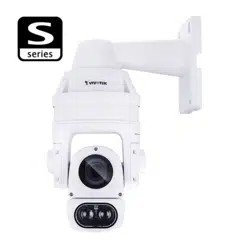Loading ...
Loading ...
Loading ...

VIVOTEK
User's Manual - 65
- Iris Priority: When selected, the Iris adjustment slide bar will appear, allowing you to select
an aperture size ranging from F14 to F1.6. Once a fixed value is selected, system firmware will
automatically tune the gain and exposure time to match an optimal exposure level.
The value is
measured in the F-number as the ratio of the focal length to the lens diameter. Iris size is inversely
proportional to the F-number; therefore, the smaller the F-number, the greater is the exposure ratio.
Smaller F-number (larger exposure ratio, largest size of lens aperture opening) is shown on the right of
the slide bar.
- Quality Priority: When selected, the embedded mapping table of aperture size and depth of eld will
apply when operating with the auto focus mechanism. This applies when both articial lights (city street
lights) and IR lights are present in scenes and the camera needs to select an appropriate aperture size
for an optimal focus. This is also coordinated with lens zoom ratio with different depths of view. For
example, when zooming in on a scene with a 20x or 30x zoom ratio, the FoV becomes very small, the
aperture size will adapt to enable the best possible focus to identify objects with the presence of both
articial lights and the camera's IR lights.
- Shutter Priority: When selected, the Exposure time slide bar will appear, allowing you to select an
exposure time ranging from 1/10,000, to 1/1 second. Once a xed value is selected, system rmware
will automatically tune the gain and iris settings to match an optimal exposure level.
Exposure control:
■
Exposure level: You can manually set the Exposure level, which ranges from -2.0 to +2.0 (dark
to bright). You can also select other values from the Exposure mode menus and select a preferred
scenario or manually congure the associated settings. You may prefer a shorter shutter time to better
capture moving objects, while a faster shutter reduces light and needs to be compensated by electrical
brightness gains.
■
Exposure mode:
Select Auto, Shutter Priority, Quality Priority, Iris Priority, or Manual mode according to your needs.
- Auto: System default, which automatically adjusts the iris, shutter speed, and gain for an optimmal
exposure level.
■ BLC (Back Light Compensation): This option will automatically add a “weighted region“ in the middle of
the window and give the necessary light compensation.
■
HLC: (Highlight Compensation). Firmware detects strong light sources and compensates on affected
spots to enhance the overall image quality. For example, the HLC helps reduce the glares produced by
spotlights or headlights.
Measurement Window: This function allows users to set measurement window(s) for low light
compensation. For example, where low-light objects are posed against an extremely bright background.
You may want to exclude the bright sunlight shining through a building's corridor.
■ Full view: Calculate the full range of view and offer appropriate
light compensation.
Loading ...
Loading ...
Loading ...
